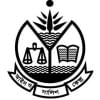Failing to fulfill commitments
THIS title has been borrowed from the latest Annual Assessment Report on the independence and effectiveness of National Human Rights Commission (NHRC), Bangladesh, done by Ain o Salish Kendra (ASK). ASK, as a member of Asian NGOs Network on National Human Rights Institutions (ANNI), has been preparing annual reports based on its assessment of the performance of the NHRC since 2008.
The latest report has outlined the commitments of NHRC, Bangladesh towards the promotion and protection of Human Rights with an assessment that after working for more than five years, most of these commitments are yet to be fulfilled. Of course, the NHRC might have a different opinion, but an assessment based on NHRC's own documents and written commitments provides ample evidence in favour of that conclusion drawn in ASK assessment report.
The most clear and outspoken document that can show NHRC's commitment is its strategic plan. In 2010, the NHRC drafted its first five years strategic plan and subsequently revised it in 2011 based on the stakeholders' feedback gathered through several workshops conducted in different parts of the country. In the first strategic plan, the NHRC identified 10 pressing human rights issues. Among them, two issues were identified as 'highest priority'. The first was enforced disappearance, torture and extrajudicial killings - termed as violence by state mechanisms; and the second was violations of economic, social and cultural rights, including health rights, and discrimination against people with disabilities.
Now, how do we assess the success of NHRC in addressing those issues set by them as highest priority? Let's look at the figure of extra judicial killings as documented by ASK: The number slightly decreased from 133 in 2010 to 100 in 2011, and 91 in 2012, however, it sharply increased to 208 in 2013. In 2014, it came down to 154 and increased to 192 in 2015. Now simply from the figures, anybody would wonder what role the NHRC has played to stop the extra judicial killings that they themselves identified as one of the highest priorities and what impact they have created?
ASK documented that NHRC has for the first time investigated the death of a person in "crossfire" in 2013. While the police claimed that a gunfight occurred while the person died in crossfire, the NHRC fact-finding concluded that no gunfight had actually happened. A three-member team led by a director of the Commission conducted the fact-finding after the media reported that 41-year-old Rajab Ali alias Kala Rajab had been killed in a "gunfight" between his accomplices and police in the early hours of February 16, 2014 in Jessore district. It has been reported by the media that the NHRC fact finding team faced resistance from the police department during its probe.
In the wake of an alarming rise in abductions and secret killings, on May 5, 2014 at a roundtable, the NHRC chairperson stated that it would seek intervention from the higher court if the government fails to stop abductions, killings and forced disappearances which did not happen. To stop extrajudicial killings and 'enforced disappearances', the NHRC repeatedly mentioned that it has placed two recommendations to the government: to stop drives by law enforcers in plain clothes and to keep at least two persons to witness under what circumstances the raid and arrests are being made. However, these recommendations have not been implemented by the government, and law enforcers are continuing their operations in plain clothes.
NHRC's role could also be assessed by analysing how it handled the much discussed case of Limon, the 16-year-old student who was shot in the leg by RAB personnel on March 23 2011. NHRC was very vocal on this case; the NHRC chairperson met Limon immediately after he was taken to the hospital and promised support from the commission. The NHRC also informed the media at a formal press briefing on August 27, 2012 that they would move to the High Court for Limon. However, on June 23, 2013, it was reported that the NHRC chairperson allegedly made an ominous proposal to Limon and his family to withdraw the case they filed against RAB. It happened on the very first day that the chairperson attended office as the chair after being reappointed for the second term. The NHRC chairperson later contested this report, claiming that it had distorted his comments as he had only informed Limon that the government might make this proposal. On July 10, 2013, the government decided to withdraw two cases filed by RAB against Limon.
The other top priority for the NHRC set forth in its first strategic plan was the violations of economic, social and cultural rights. In its latest annual report, published in 2014, NHRC Bangladesh claimed that "one major achievement of JAMAKON in the last five years is that it could effectively bring Economic, Social and Cultural Rights into focus - a shift in popular perception that helped see human rights beyond the realms of civil and political rights as the only benchmark for measuring human rights situations in the country."
This is of course an interesting approach; however, there are some issues we have to take into consideration while looking at the approach. The NHRC Act 2009 has provided the mandate to the NHRC and it has also defined human rights in its own term: 'Right to life, Right to liberty, Right to equality and Right to dignity of a person guaranteed by the constitution of the People's Republic of Bangladesh and such other human rights that are declared under different international human rights instruments ratified by the People's Republic of Bangladesh and are enforceable by the existing laws of Bangladesh (Section 2-f)'. While this has specified some rights that are civil and political in nature, and widens NHRC's mandate to other human rights, it is subjected to Bangladesh government's ratification and enforceability by laws. And we know that most of the economic, social and cultural rights like right to food, clothing, education, healthcare, housing etc are not recognised as fundamental rights in the Constitution of Bangladesh, and are thus not enforceable through the court of law. Under such circumstances, how much could the NHRC do to ensure and protect these rights within its mandate?
The NHRC has printed some publications to promote economic, social and cultural rights; however, it has not put forward its voice adequately in favour of the defenders struggling for this set of rights. For example, in recent times, the commission has not said anything about the tea workers movement protesting the establishment of special economic zone in Habiganj, it did not protest the government's initiative of building the Rampal power plant that will be dangerous for the Sundarbans and its eco-system and will create severe impacts on the livelihood of thousands of people. The NHRC also did not make any comment on the recent eviction drive on January 2016 at Dhaka's Kalyanpur slum that houses about 40,000 low-income dwellers. The commission used to visit public hospitals and also raised concerns about the poor services several times. However, what is missing from NHRC's actions is that it has not done systematic monitoring of the health services prevailing in the country, and has not taken any strategic action to improve them.
The NHRC has adopted its second five-year strategic plan for 2016-2020, and kept the same two top priorities without giving any explanation on achievements from the first strategic intervention period. This proves that the NHRC themselves acknowledge that much has to be done in those areas. We, of course, acknowledge that five years is not enough time to handle these issues, but an honest assessment of the lessons learnt is important as is adopting effective strategies based on those lessons.
The writer is a human rights activist.

 For all latest news, follow The Daily Star's Google News channel.
For all latest news, follow The Daily Star's Google News channel. 








Comments